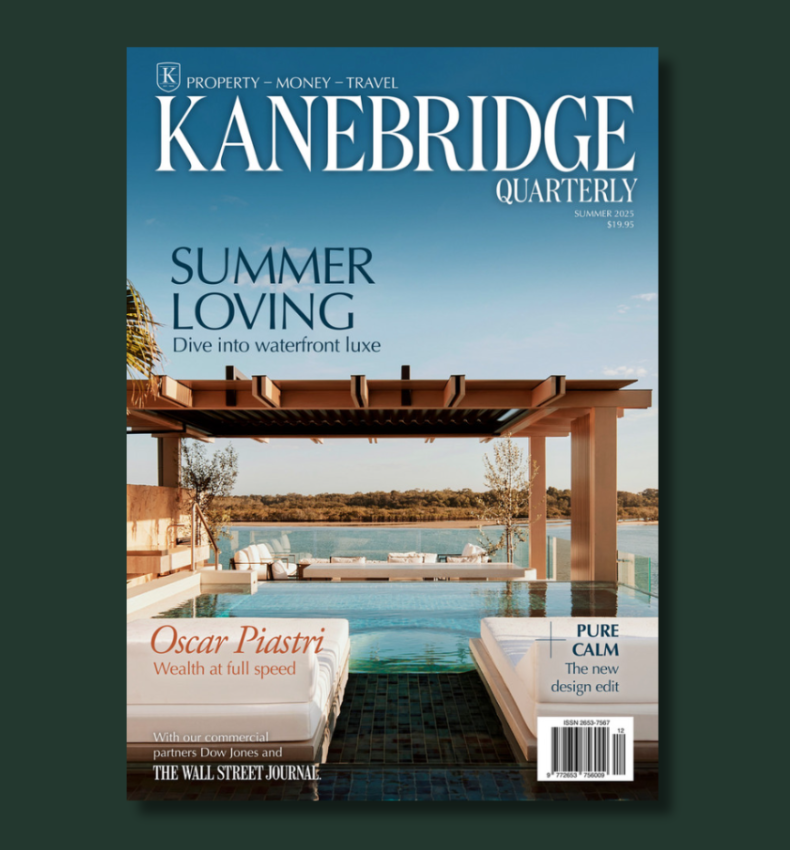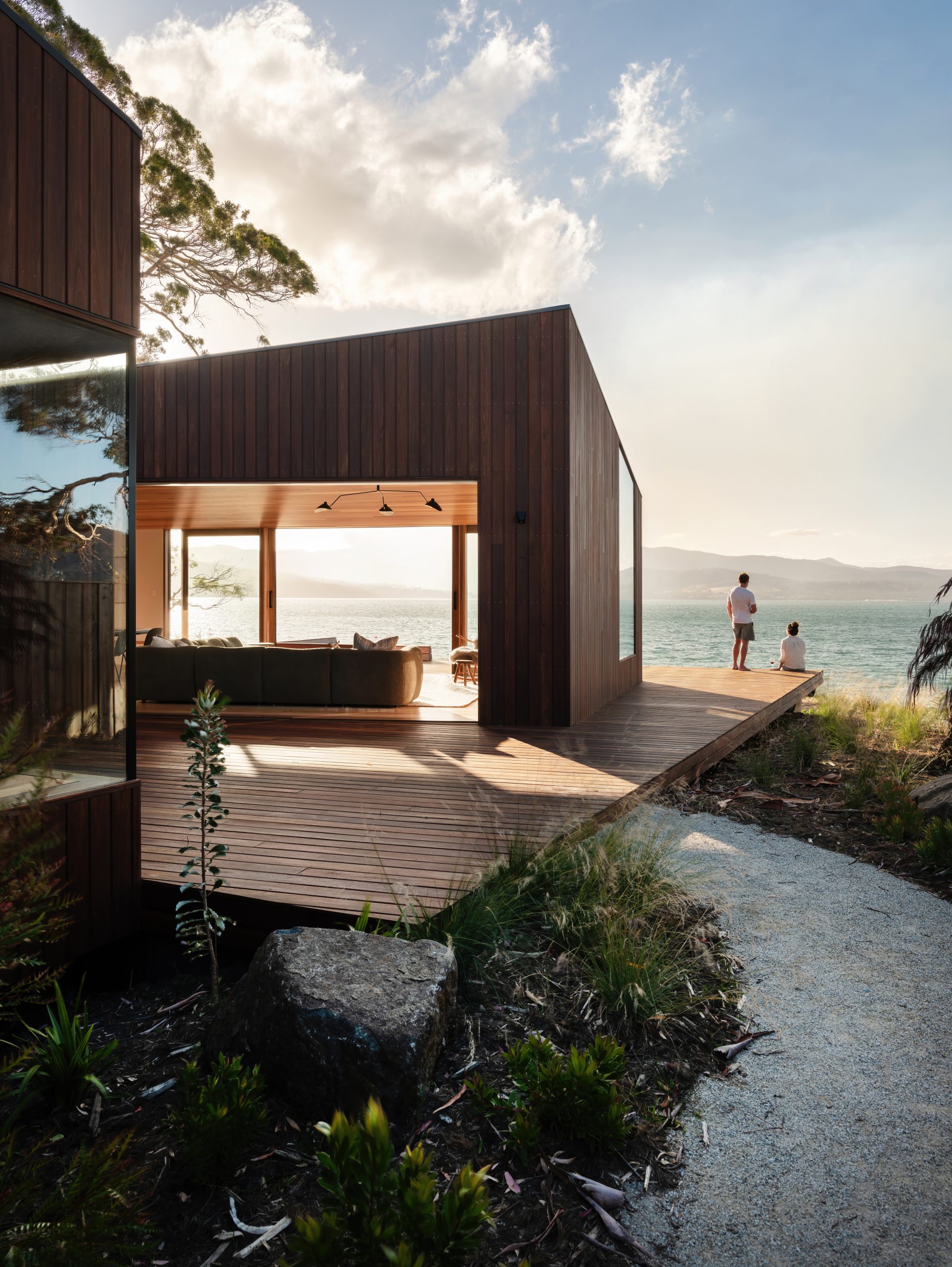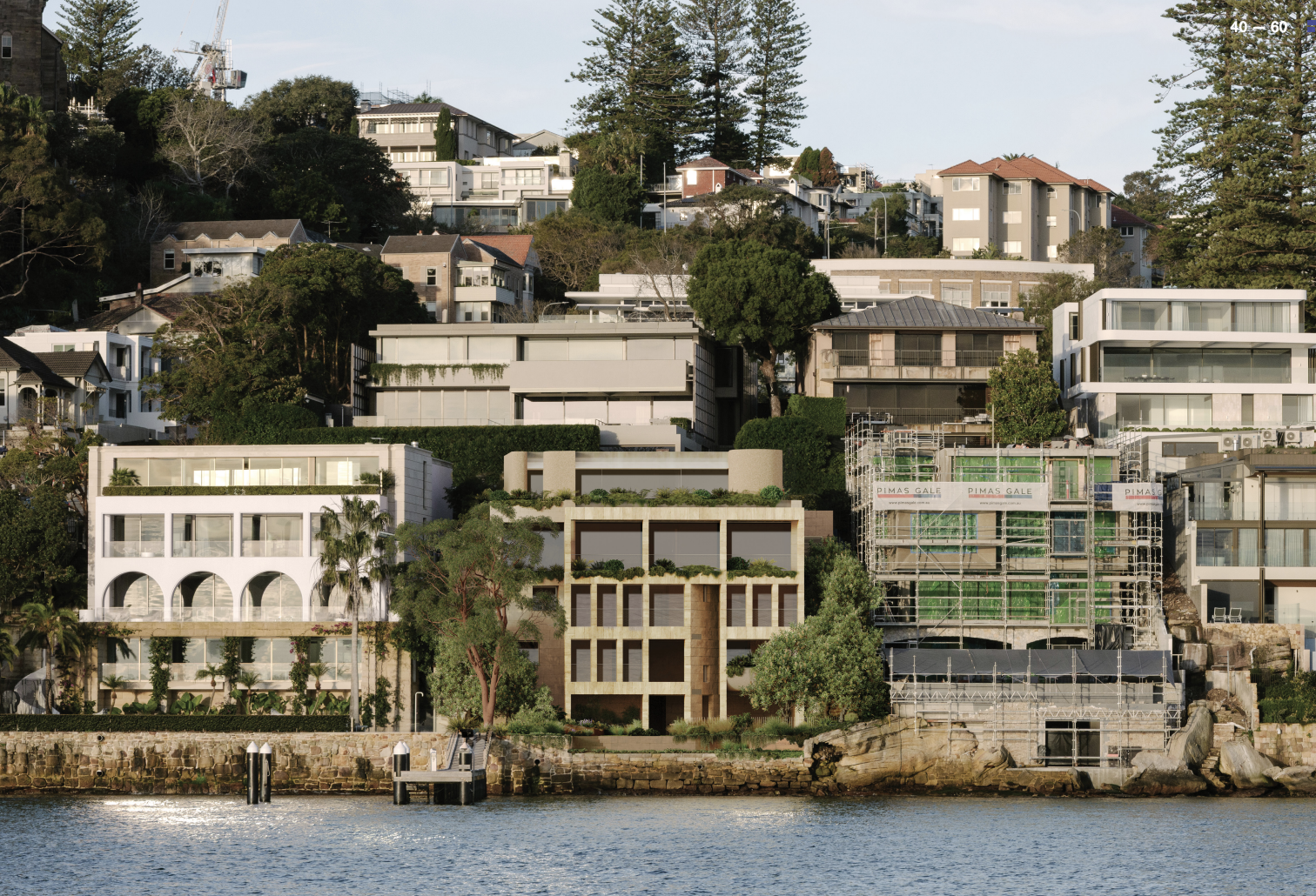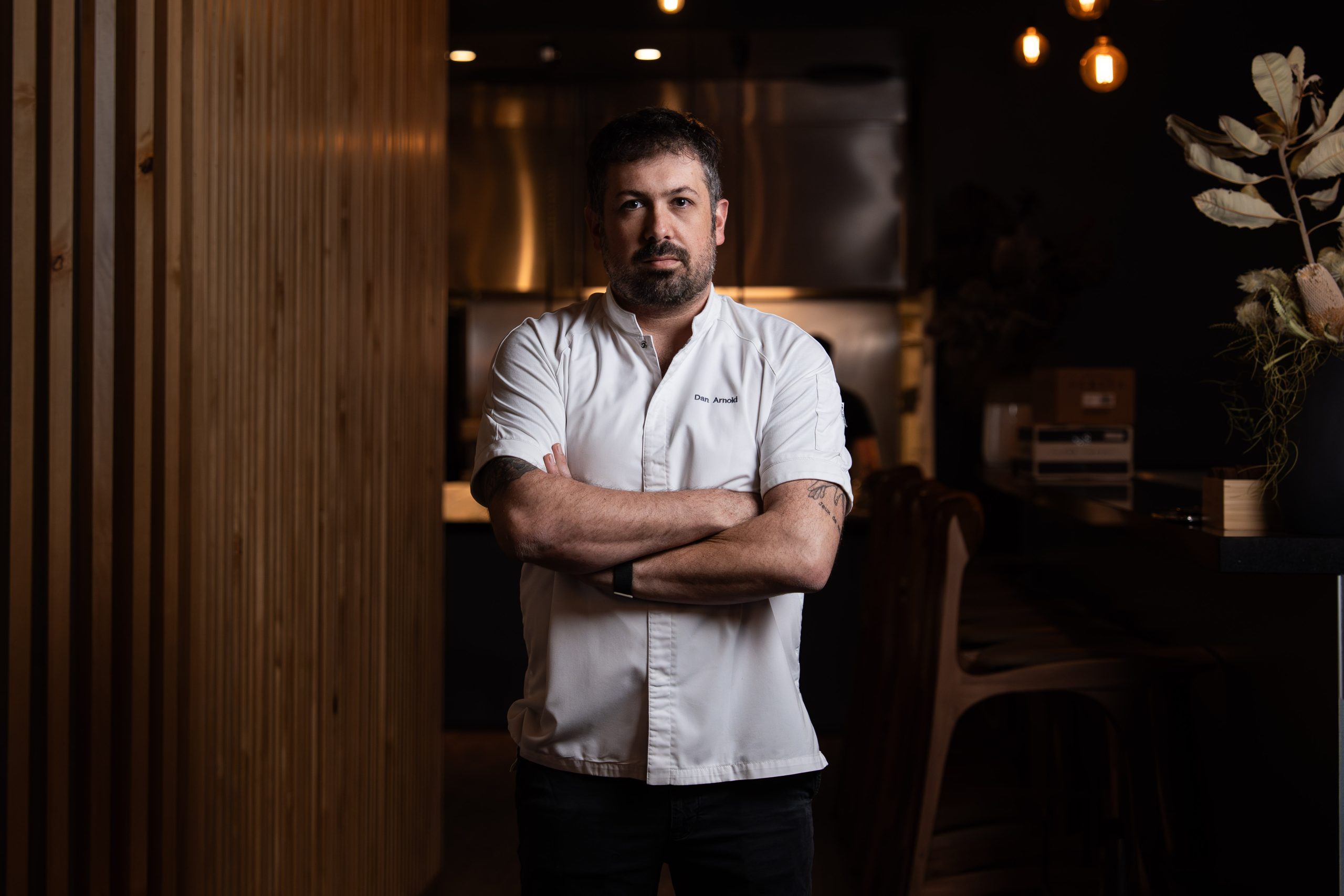NEW WAVE: THE EVOLUTION OF AUSTRALIA’S COASTAL LUXURY
From the shacks of yesterday to the sculptural sanctuaries of today, Australia’s coastal architecture has matured into a global benchmark for design.
In the land down under, the beach is in our DNA. So is it any wonder that Australian architecture is leading the world in luxury coastal design?
With about 85 per cent of our population living within 50 kilometres of the coastline, we’ve perfected the art of the beach house. Yet over the past two decades, there’s been a sophisticated shift in the traditional coastal cottage.
The residential revolution that has washed over our most valuable waterfront locations has replaced the original weatherboard “shacks” by the sea with a contemporary design movement shaped by admiration and respect for the natural environment.
No longer simply about the view, today’s coastal architecture is about creating beautiful homes that perform seamlessly in an increasingly volatile climate while meeting the rising tide of high-net-worth buyers who want it all.
From infinity pools to wellbeing spaces that connect with nature, one-time weekenders have been transformed into permanent escapes, providing year-round indulgence.

An island home
Belgian-born, Tasmania-based architect Lara Maeseele believes the quintessential coastal home has become a finely tuned instrument. With more vacant land to experiment with, and lower entry prices, she says the Apple Isle is perfectly placed for architects and homeowners to explore the new-age beach house.
“A highlight in Tassie is you can find these amazing vacant blocks on the coastline, and still be blown away by the unexpected views,” she says.
Having studied in Belgium and worked in London, Maeseele brings a northern European minimalist sensibility to the Australian beach house.
“Our way of life is so complex. When we get home, it’s nice to slow down, to declutter and find some peace and quiet.”
Nebraska House on Bruny Island took home the 2025 HIA Tasmanian Home of the Year and earned a commendation at the Houses Awards, but Maeseele still affectionately refers to her design overlooking the D’Entrecasteaux Channel as a “shack.”
“What we tried to do was make sure that from the foreshore, it was kept small and consistent with the neighbouring properties, and that’s the luxury element that I see in the shack. It sits quietly in its setting.”
With a water backdrop from most rooms, she says the ocean was a primary player when designing the house, but light was just as important for the clients.
“Both the western and eastern elevations slide wide open so it feels like a bit of an umbrella,” she says. “Then in winter, it’s fully insulated and glazed. When the sun sets, you have the most beautiful evenings, feeling cosy and sheltered while watching the wind and water outside.”
True to her European roots, Maeseele believes that when it comes to aesthetically pleasing and functional coastal design, the less-is-more approach should drive every project.
“We’re on an island, so we’re very aware any build leaves an impact,” she says. “We chose lightweight materials so, in the end, the house could be dismantled and the timber reused.”

Thriving by the sea
Sydney architect Jon King, who has designed both beach houses and boutique hotels, says the new generation of coastal design is a balancing act between luxury and environment.
Even in today’s dazzling designs, he believes comfort should still overshadow spectacle.
“If you’re going to make an exceptional beach house, it has to adapt. It needs to be beautiful when the sun is shining and the whales are jumping out of the water, but the next day it needs to withstand horrendous southerlies and wild storms,” he says.
“The material choices are vital because they need to look great, but last in that salty environment and in extreme winds and rain.”
What was once the domain of fibro cottages has developed into a sea of enviable, state-of-the-art designs.
“For a long time, we lived simply in beach environments because the land was cheap and our buildings were unsophisticated. But now, living on the coast has become coveted, even fetishised. People are making statements through architecture, and that changes everything.”
He says that in an effort to connect with nature, the temptation can be to build with vast walls of glass to capture the ultimate panorama, but subtle design can be more successful when it gives the dramatic backdrop a curated cameo.
“Most coastal locations are suburban in nature with small blocks and neighbours either side, so you can’t always get the view you want,” he says.
“But you can frame it beautifully rather than opening everything up to the elements.”
Cheyne Fox of White Fox Gold Coast, who has recently listed one of only two houses on Hayman Island in the Whitsundays, agrees that Australia’s coastal homes are unparalleled.
“Gone are the days when people wanted their properties to stand out and look at odds with the surrounds. Today’s luxury designs are very much about fitting in,” Fox says.
The Residence at Hayman spans three levels and offers more than 1,400 square metres of internal and external living space.
Designed by the late, internationally renowned architect Kerry Hill, it also features breezeways, terraces and an infinity pool designed to embrace the subtropical environment.
“When you get to Hayman Island, you get calico bags. There are no plastic bottles or even cars. There is a true respect for the environment, being so close to the Great Barrier Reef. And as such, the architecture reflects that ethos.”
She says high-net-worth buyers will pay top dollar for such indulgent and considered coastal designs.
“This is a once-in-a-lifetime proposition for a purchaser, but also a once-in-a-lifetime proposition for an agent.”
Read the full story here.
The PG rating has become the king of the box office. The entertainment business now relies on kids dragging their parents to theatres.
From farm-to-table Thai to fairy-lit mango trees and Coral Sea vistas, Port Douglas has award-winning dining and plenty of tropical charm on the side.
New research reveals absolute waterfront properties commanding soaring premiums and unmatched buyer demand across the East Coast.
Australia’s most coveted real estate isn’t found in penthouses, trophy suburbs or architectural showpieces. It’s found on the water’s edge.
New analysis shows that absolute waterfront homes continue to outperform the wider prestige market, with buyers prioritising lifestyle, wellness and long-term security, firmly placing beachfront, harbourfront and riverfront properties in a class of their own.
According to new data from McGrath’s The Waterfront Advantage report, waterfront homes across Australia now command an average 86 per cent premium over comparable inland properties.
Sydney leads the increase at 122 per cent, followed by the Gold Coast at 82 per cent, Brisbane at 59 per cent and Melbourne at 43 per cent. All major cities have seen premiums rise over the past two years, underscoring the enduring power of a blue-chip waterfront position.
A Market Defined by Scarcity and Lifestyle Shifts
Several drivers sit behind this sustained strength.
The scarcity of absolute waterfront land, combined with limited turnover, has long kept supply tight. But in recent years, buyer appetite has surged as Australians place greater value on wellness, nature, and the quality of time spent at home.
The research notes that even in uncertain economic periods, prestige waterfront properties remain “reliable investments” thanks to their strong marketability and ease of repositioning within a portfolio. These homes are sought-after for both lifestyle and legacy value.
Absolute Waterfront Outperforms All Other Positions
Not all waterfront locations carry equal weight. In the year ending Q3 2025, super-prestige sales on the absolute waterfront rose 6 per cent, while waterfront reserve properties fell 30 per cent, and opposite-waterfront homes dropped 34 per cent. Premium buyers want direct frontage, and they are increasingly decisive when the right property comes onto the market.
Queensland continues to dominate East Coast waterfront activity, accounting for 58 per cent of all waterfront super-prestige sales, ahead of NSW at 38 per cent.
Victoria has remained consistent at around 9 per cent. Over the past five years, Barangaroo topped the charts for absolute waterfront apartment sales (73 sales), while Mosman led house transactions (38 sales). Regional standouts included Broadbeach Waters and Noosaville.
Maritime Facilities: The Luxury Buyers Now Expect
For prestige homeowners, proximity to water is only part of the appeal. Increasingly, buyers want direct boating access and exclusive maritime amenities.
The report shows that two-thirds of absolute waterfront sales included at least one maritime facility. Pontoons appeared in 28 per cent of sales, jetties in 26 per cent, and smaller shares featured slipways or moorings.
This reflects Australia’s strong boating culture. More than 900,000 vessels were registered nationally in 2025, with 83 per cent located along the East Coast. Boats between six and eight metres recorded the fastest growth, rising 19 per cent over five years.
Private Beach Access: The Ultimate Luxury Premium
Among all prestige property features, private beach access delivers one of the most substantial price uplifts. These tightly held homes recorded a 71 per cent value increasse in Q3 2025 compared with inland counterparts, up from 44 per cent in 2017.
The report attributes this surge to scarcity, heightened demand during the pandemic and the lasting appeal of privacy and seclusion.
Harbour Homes Still Command the Highest Premiums
Harbour frontage remains Australia’s most valuable waterfront category, delivering a 125 per cent increase over non-waterfront homes.
This is largely driven by Sydney Harbour’s deep waters, natural beauty and globally recognised backdrop. Coastal homes recorded a 93 per cent uplift, while riverfront residences achieved 74 per cent. Canal-front homes held steady at around 40 per cent.
Strong Outlook for 2026 and Beyond
The outlook for premium waterfront homes remains exceptionally strong. With limited supply, sustained buyer demand and a national shift toward lifestyle-led decision-making, absolute waterfront properties are expected to continue outperforming the broader prestige market.
As the report concludes, waterfront homes are not just coveted lifestyle properties; they are “enduring legacy investments” that combine prestige, privacy and long-term financial security.
Pure Amazon has begun journeys deep into Peru’s Pacaya-Samiria National Reserve, combining contemporary design, Indigenous craftsmanship and intimate wildlife encounters in one of the richest ecosystems on Earth.
On October 2, acclaimed chef Dan Arnold will host an exclusive evening, unveiling a Michelin-inspired menu in a rare masterclass of food, storytelling and flavour.




















